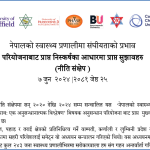I firmly believe that when you are delivering classes online the quality of visual presentation needs to be greatly improved, in particular in terms of how professional it looks. This includes using more colour, more visual elements and adding a dynamic dimension to the presentation. Animations are great to do that. A blank background with bullet points of text coming in at the same time does not provide for the most engaging online learning experience.
Over the past two months I’ve spent a considerable amount of time learning how to animate PowerPoint presentations. At May’s BUBS educational enhancement session colleagues showed an interest in knowing more about how bring their presentations to life. Responding to this interest, I developed a short PowerPoint presentation (what else!) that I shared with BUBS colleagues at this month Educational Enhancement Forum. The presentation Animations & Transitions in Powerpoint: A guide to Youtube resources has now been recorded and the video uploaded on Youtube.
The presentation doesn’t teach how to animate presentations, rather it directs viewers to (mainly youtube) resources that they can use to learn about how to animate presentations. I hope it encourages colleagues to learn more about these, while saving them time by directing them to good resources.
Miguel Moital, Principal Academic in Events Management
Department of Sport & events Management, Bournemouth University Business School
 NIHR Learn – Resources to support you through the Covid-19 pandemic
NIHR Learn – Resources to support you through the Covid-19 pandemic










 Fourth INRC Symposium: From Clinical Applications to Neuro-Inspired Computation
Fourth INRC Symposium: From Clinical Applications to Neuro-Inspired Computation Writing policy briefs
Writing policy briefs Upholding Excellence: The Concordat to Support Research Integrity
Upholding Excellence: The Concordat to Support Research Integrity Today’s Documentation Will Serve Tomorrow’s Justice
Today’s Documentation Will Serve Tomorrow’s Justice ECR Funding Open Call: Research Culture & Community Grant – Application Deadline Friday 12 December
ECR Funding Open Call: Research Culture & Community Grant – Application Deadline Friday 12 December MSCA Postdoctoral Fellowships 2025 Call
MSCA Postdoctoral Fellowships 2025 Call ERC Advanced Grant 2025 Webinar
ERC Advanced Grant 2025 Webinar Horizon Europe Work Programme 2025 Published
Horizon Europe Work Programme 2025 Published Horizon Europe 2025 Work Programme pre-Published
Horizon Europe 2025 Work Programme pre-Published Update on UKRO services
Update on UKRO services European research project exploring use of ‘virtual twins’ to better manage metabolic associated fatty liver disease
European research project exploring use of ‘virtual twins’ to better manage metabolic associated fatty liver disease